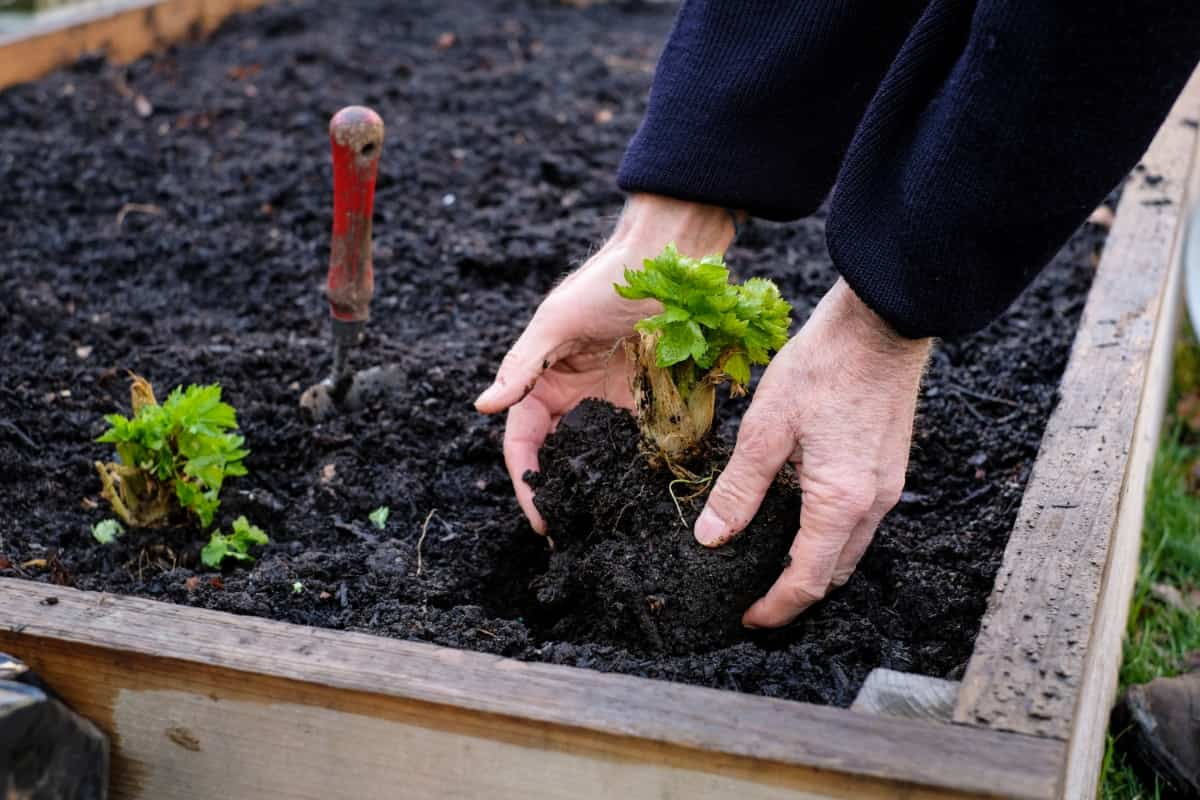Raised bed gardening provides a wealth of benefits, including improved soil conditions, easier maintenance, better pest control, and more efficient use of space. But the success of your gardening effort relies on a well-thought-out raised bed vegetable garden layout. This involves careful planning, proper spacing, and the application of some key principles to maximize your harvest.

Whether you are working with a 2×8 raised bed vegetable garden layout, a garden plot 4×8 raised bed vegetable garden layout, or a 2×4 raised bed vegetable garden layout, the concepts, and ideas we’ll explore apply. With a raised garden bed layout planner, you can optimize your growing space for fruitful results.
Raised Bed Vegetable Garden Layout Design
Factors to Consider when Designing a Raised Bed Vegetable Garden Layout
The first step in creating a productive raised bed vegetable garden is careful design and planning. Before you start building and planting, take time to think about the layout. What is the orientation of your garden? The amount of sunlight, air circulation, and access to water should inform your design.
Your garden’s size and shape also play significant roles. The type of vegetables you plan to grow will determine the bed’s size, considering their mature size, spacing needs, and compatibility with other plants. Remember, a well-planned garden reduces the amount of work and increases productivity.
Step-By-Step Guide to Designing a Raised Bed Vegetable Garden Layout
Start by sketching a plan when designing your raised bed vegetable garden layout. Draw the shape of your garden plot, marking where you want to position your raised beds. Remember to leave enough space between each bed for easy access and maintenance. Your plan should be to scale and include all paths and walkways.
Include a compass rose to ensure your layout takes advantage of sunlight direction. When choosing which plants to grow, consider their growth habit, size, and compatibility with other plants. Finally, mark out where each plant will go in the raised beds. Planning is critical to successful gardening.
Key Principles for Effective Raised Bed Vegetable Garden Layout Design
For effective raised bed vegetable garden layout design, remember these key principles: prioritize sunlight, plan for easy access, practice crop rotation, and plan for efficient water usage. Most vegetables require at least six hours of sunlight daily, so place your beds where they will get maximum sunlight exposure.
Easy access is essential for maintenance and harvesting, so ensure your paths are wide enough. Crop rotation helps prevent diseases and pest infestations, so rotate crops annually. Efficient water usage ensures your plants get enough water without wastage, so consider drip irrigation or soaker hoses.
Designing Raised Bed Vegetable Garden Layout for Maximum Productivity
Optimize every inch of space to maximize productivity in your raised bed vegetable garden. Interplanting, succession planting, and vertical gardening can help you get the most out of your beds. Interplanting involves growing two or more crops with different growth habits or maturation times. Succession planting means planting another crop immediately after one crop is harvested. Vertical gardening involves growing crops upwards on supports, perfect for crops like tomatoes, cucumbers, and beans. These strategies will help you get the most from your garden.
Choosing the Right Dimensions for Your Raised Bed Vegetable Garden Layout
Choosing the right dimensions for your raised bed vegetable garden layout is crucial. A width of four feet is generally recommended as it allows easy reach into the bed from both sides without stepping on the soil. The length can vary, but remember that longer beds may require cross-supports to prevent the sides from bowing out.
In case you missed it: Frequently Asked Questions About Raised Bed Gardening

Regarding height, at least 12 inches is ideal, although it can be more if you have back problems or mobility issues. Considering dimensions like the 2×8 raised bed vegetable garden layout or the 4×8 raised bed garden layout is beneficial because they are manageable, efficient, and, most importantly, can fit most backyard gardens.
Designing a Raised Bed Vegetable Garden Layout for Easy Access and Maintenance
Designing your garden layout for easy access and maintenance is an essential factor. Raised beds should have sufficient spacing for convenient movement and work in between. Typically, a 2 to 3-foot path between each bed is recommended. The beds should also be located in an area that allows easy access to water and is close enough to your tool storage area to save on time and labor. Consider using a 2×4 raised bed vegetable garden layout for easy maintenance. This layout is small and manageable, which helps in timely watering, weeding, and harvesting.
Incorporating Paths and Walkways Into Your Raised Bed Vegetable Garden Layout
Paths and walkways are critical components of your raised bed vegetable garden layout. Not only do they provide easy access to your plants for maintenance and harvesting, but they also prevent soil compaction by providing designated walking areas. Choose from different materials, such as mulch, gravel, or pavers for your paths, based on your preference and budget. Consider having your paths at least two feet wide to ensure you can move comfortably with your garden tools.
Designing a Raised Bed Vegetable Garden Layout for Different Plant Heights
Designing your raised bed vegetable garden layout to accommodate different plant heights can maximize your garden’s productivity and visual appeal. Taller plants like tomatoes, corn, and pole beans should be placed where they won’t shade shorter plants. Usually, this is on the north or west side of the garden. Middle-height plants like pepper, eggplants, and bush beans can go in the center, while shorter crops like radishes, carrots, and lettuce can be positioned in the front or east side.
Creating a Visually Appealing Raised Bed Vegetable Garden Layout
A visually appealing raised bed vegetable garden layout can be a source of pride and a centerpiece for your outdoor space. Incorporate various plant heights, colors, and textures in your garden design. Add flowers and herbs not only for their beauty but also for their capacity to lure beneficial insects and repel pests. Add structures like trellises, pergolas, or archways to add interest and support climbing plants. Lastly, keep your garden neat and well-maintained.
In case you missed it: The Best Homemade Liquid Fertilizer for Raised Bed Plants

Conclusion
A well-designed raised bed vegetable garden layout is more than randomly placing plants in a box. It requires thoughtful planning, careful consideration of many factors, and the application of key gardening principles. The goal is to create a productive, efficient, and aesthetically pleasing garden that is easy to maintain. By considering factors such as sunlight, air circulation, plant compatibility, and water efficiency, you can design a layout that maximizes your garden’s productivity.
- Feed Your Flock for Less: Top 10 Tips to Save on Chicken Feed
- Ultimate Guide to Ossabaw Island Hog: Breeding, Raising, Diet, and Care
- Hatching Answers: The Top 10 Reasons Your Chickens Aren’t Laying Eggs
- Eggs and Economics: Breaking Down the Cost of Raising Backyard Chickens
- Defend Your Greens: Proven Methods to Keep Iguanas Out of Your Garden
- Ultimate Guide to Cinnamon Queen Chicken: A Comprehensive Guide for Beginners
- Ultimate Guide to California Tan Chicken: Breeding, Raising, Diet, Egg-Production and Care
- Ultimate Guide to Marsh Daisy Chicken: Breeding, Raising, Diet, and Care
- 10 Types of Chicken Farming Businesses You Can Start for Profits